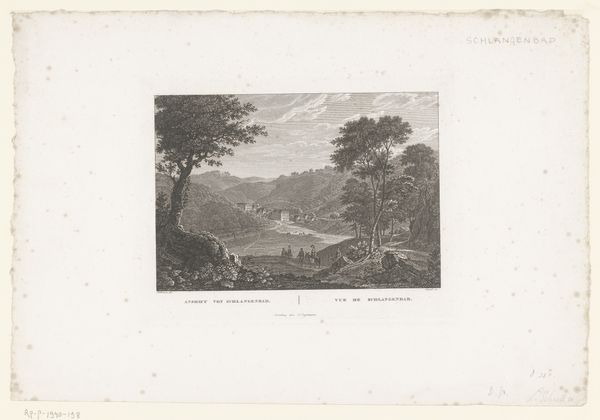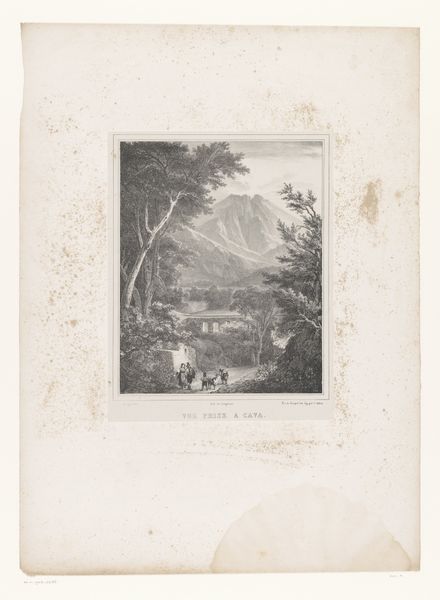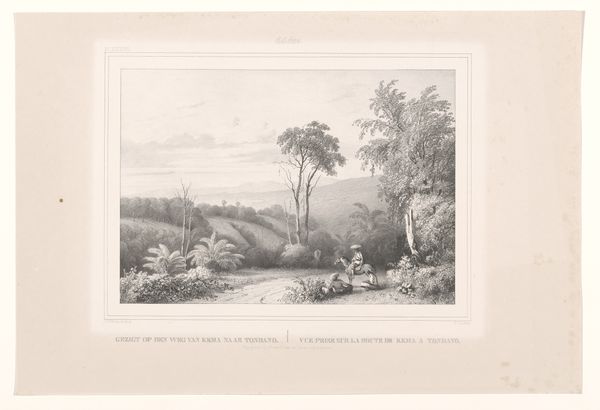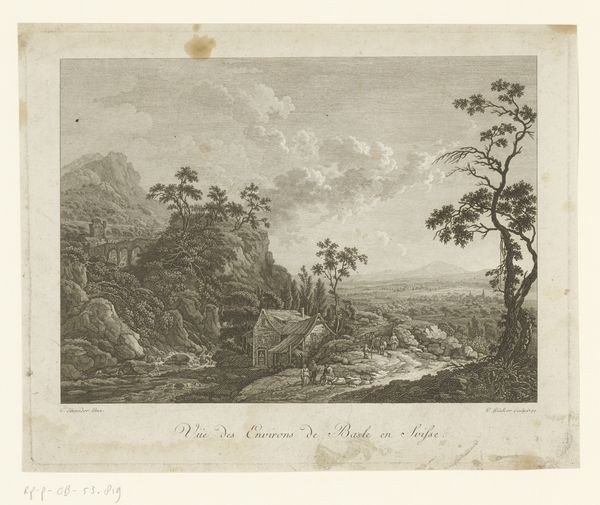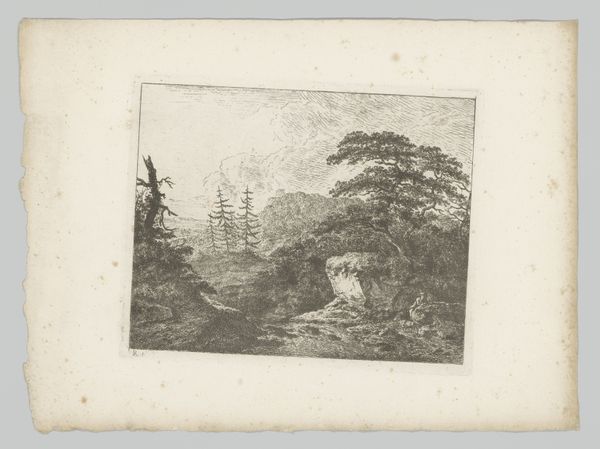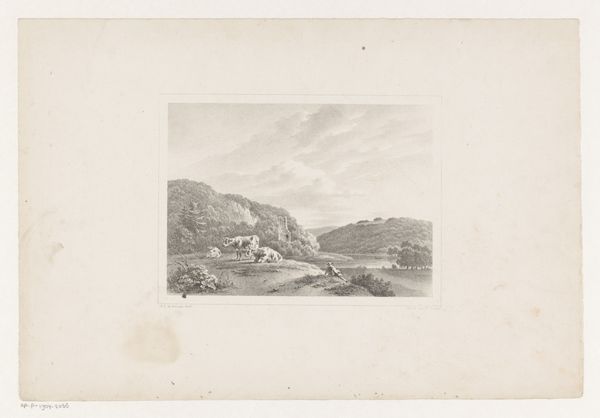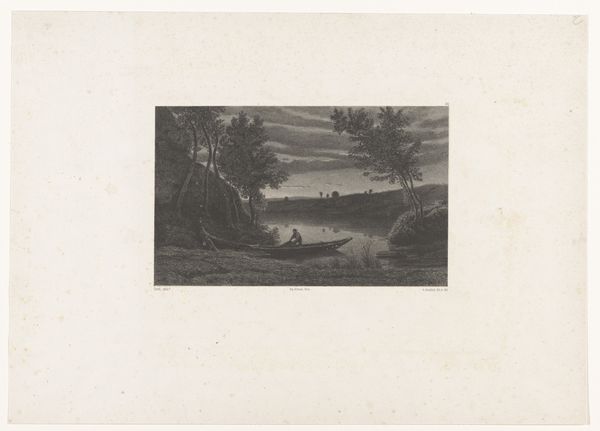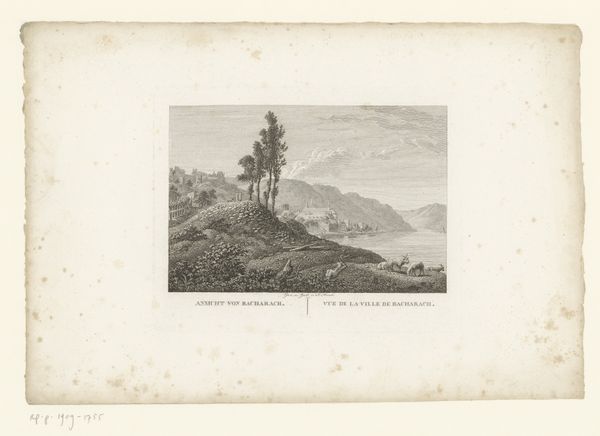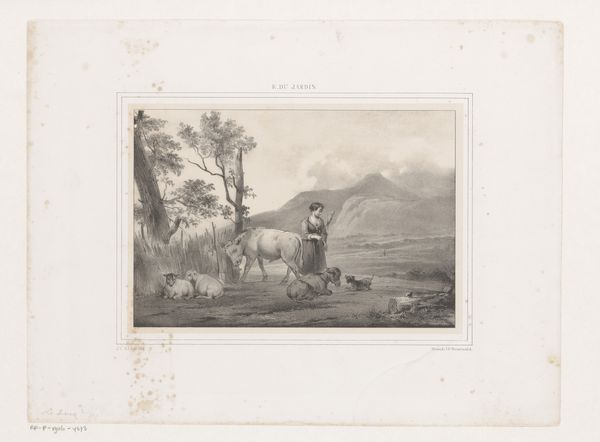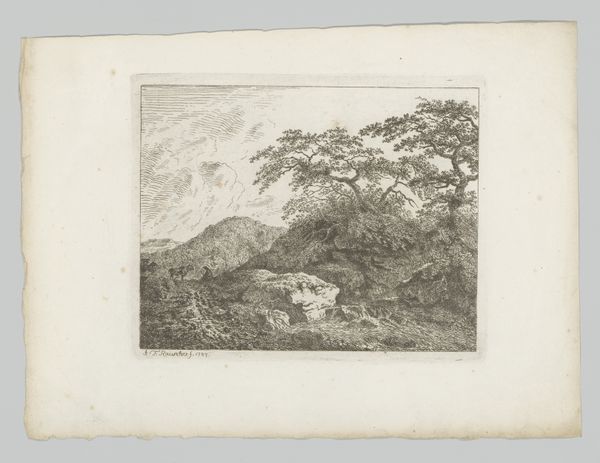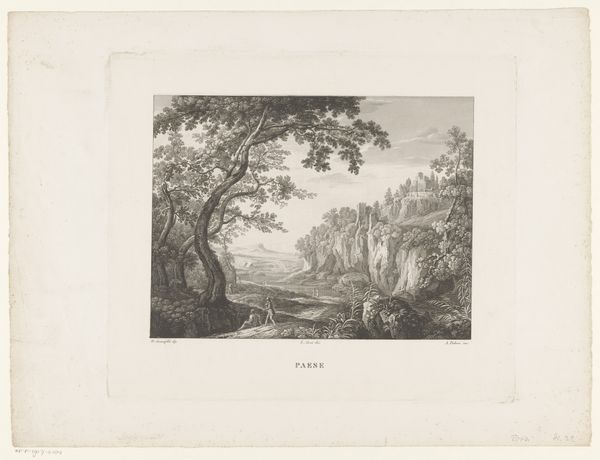
drawing, print, etching
#
drawing
# print
#
etching
#
landscape
#
romanticism
#
mountain
#
watercolour illustration
Dimensions: height 250 mm, width 330 mm
Copyright: Rijks Museum: Open Domain
Paulus Lauters made this landscape study in the nineteenth century. The image invites us to consider the Romantic movement's interest in the sublime qualities of nature, but also the social context in which such a landscape could be appreciated. Consider the image's visual codes: the solitary building on the hillside, the figures at rest in the foreground. The artist's native Belgium at this time was undergoing significant social changes. The pastoral scene, with its harmonious depiction of man and nature, could be interpreted as a commentary on the rapid industrialization that was beginning to reshape the country. The rise of the art market and the increasing importance of institutions such as the Rijksmuseum meant that artists were now creating works for a public audience, an audience with certain expectations and beliefs about the role of art in society. Art historians draw on a range of resources, including exhibition reviews and economic data, to shed light on the relationship between art and society.
Comments
No comments
Be the first to comment and join the conversation on the ultimate creative platform.

